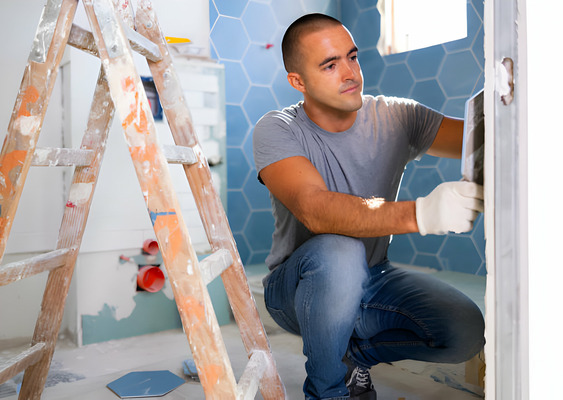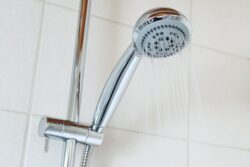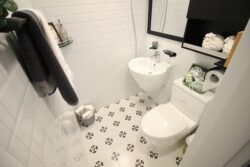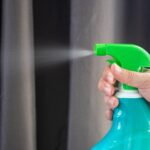
Starting a bathroom renovation is like giving a vital area of our homes a facelift. But what if we could go beyond aesthetics and make sure that the makeover is not only pleasant to the eye but also kind to the environment? Welcome to the world of eco-friendly bathroom renovation, where sustainable choices meet the pursuit of cleanliness. In this guide, we will delve into the art of crafting a bathroom that not only promotes a sense of cleanliness and tranquility but also treads lightly on the planet. From selecting sustainable materials to embracing water-efficient fixtures, this journey combines the best of both worlds – a clean, revitalized bathroom and a dedication to environmental well-being.
When it comes to eco-friendly bathroom renovation, it is more than just changing the tiles and vanities; it is a deliberate choice to have a positive impact that can reach far beyond our homes and contribute to a cleaner, more sustainable future. Come along with us as we explore sustainable cleaning options, where each fixture, material, and design choice helps create a bathroom that not only expresses our individual style but also complies with our environmental responsibility. Let us take this journey together, where eco-consciousness and the desire for a clean bathroom coexist peacefully and serve as a symbol of our shared commitment to a better, healthier, and more environmentally friendly world.
See also our post on Zero-Waste Bathroom Cleaning: Sustainable Scrubs and Sprays
Sustainable Materials for Bathroom Surfaces
Bamboo Flooring:
Consider bamboo flooring as a sustainable alternative to traditional hardwood. Bamboo is a rapidly renewable resource that grows much faster than traditional hardwoods, making it an eco-friendly choice. It provides a warm and stylish flooring option for your bathroom.
Recycled Glass Tiles:
Opt for recycled glass tiles for bathroom surfaces, such as shower walls and backsplashes. These tiles are made from post-consumer recycled glass, reducing the demand for new raw materials. They come in various colors and patterns, offering both style and sustainability.
Reclaimed Wood Vanities:
Choose a reclaimed wood vanity for a rustic and environmentally friendly focal point in your bathroom. Using reclaimed wood prevents the need for cutting down new trees and repurposes materials that would otherwise go to waste, contributing to the reduction of deforestation.
Cork Wall Coverings:
Consider cork wall coverings as an eco-friendly alternative to traditional wallpaper or paint. Cork is a renewable resource harvested from the bark of cork oak trees, and its unique texture adds a touch of natural warmth to your bathroom.
Recycled Steel Fixtures:
When selecting bathroom fixtures like faucets, showerheads, and towel racks, opt for those made from recycled steel. Recycled steel reduces the environmental impact associated with mining and manufacturing new steel, making it a sustainable choice for your bathroom.
Water-Efficient Plumbing Fixtures
Low-Flow Toilets:
Install low-flow toilets to significantly reduce water consumption. These toilets use less water per flush, contributing to water conservation without compromising on performance. Look for models certified by WaterSense for optimal efficiency.
Water-Saving Showerheads:
Choose water-saving showerheads to reduce water usage during showers. Modern designs ensure that you can enjoy a satisfying shower experience while conserving water. Look for fixtures labeled with the WaterSense certification for water-efficient options.
Sensor-Activated Faucets:
Opt for sensor-activated faucets to control water usage. These fixtures only dispense water when hands are detected underneath, preventing unnecessary water wastage. They are a hygienic and water-saving addition to your eco-friendly bathroom.
Greywater Systems:
Consider implementing greywater systems that recycle water from sinks and showers for use in flushing toilets or watering plants. This innovative approach minimizes water waste and maximizes the utility of water within your home.
Hot Water Recirculation Systems:
Install hot water recirculation systems to reduce the time it takes for hot water to reach faucets and showers. This prevents the unnecessary running of water as you wait for it to warm up, contributing to both water and energy conservation.
See also our post How to Properly Clean and Disinfect Your Bathroom
Energy-Efficient Lighting and Ventilation
LED Lighting:
Choose LED lighting for your bathroom. LED bulbs are energy-efficient, lasting longer and consuming less energy than traditional incandescent bulbs. This choice not only reduces energy consumption but also lowers your electricity bills.
Natural Lighting:
Maximize natural lighting in your bathroom by incorporating windows or skylights. Natural light not only creates a bright and welcoming atmosphere but also reduces the need for artificial lighting during the day, further lowering energy usage.
Energy-Efficient Ventilation Fans:
Install energy-efficient ventilation fans to improve air circulation and reduce humidity in your bathroom. Look for fans with the ENERGY STAR label, indicating that they meet strict energy efficiency guidelines.
Smart Lighting Controls:
Consider smart lighting controls that allow you to adjust brightness and set timers. Smart technology enables you to customize lighting based on your needs, reducing unnecessary energy consumption.
Solar-Powered Ventilation:
Explore solar-powered ventilation options for your bathroom. Solar-powered exhaust fans utilize renewable energy, reducing your dependence on conventional electricity sources and lowering your overall carbon footprint.
Eco-Friendly Bathroom Cleaners
Homemade Cleaning Solutions:
Create your own bathroom cleaners using simple ingredients like vinegar, baking soda, and lemon juice. Homemade cleaners are not only effective but also eliminate the need for harsh chemicals, promoting a healthier and more eco-friendly environment.
Biodegradable Cleaning Products:
Choose biodegradable and environmentally friendly cleaning products for your bathroom. Many eco-friendly brands offer cleaning solutions that break down naturally, minimizing their impact on water systems and ecosystems.
Refillable Cleaning Bottles:
Opt for refillable cleaning bottles to reduce single-use plastic waste. Many sustainable cleaning product brands offer refill stations where you can replenish your supply, minimizing packaging waste and promoting a circular economy.
Eco-Friendly Cleaning Tools:
Invest in eco-friendly cleaning tools such as bamboo scrub brushes and reusable microfiber cloths. These tools are durable, sustainable, and can be used repeatedly, reducing the need for disposable cleaning materials.
Water-Efficient Steam Cleaners:
Consider water-efficient steam cleaners for deep cleaning surfaces in your bathroom. Steam cleaners use minimal water while effectively removing grime and bacteria, offering a greener alternative to traditional cleaning methods.
See also our post on Green Cleaning for Wooden Toys: A Safer Playtime
Waste Reduction and Recycling in the Bathroom
Recycling Bins:
Place recycling bins in your bathroom for the proper disposal of recyclable items such as cardboard, paper, and plastic containers. Proper recycling reduces landfill waste and supports sustainable waste management practices.
Composting Options:
Explore composting options for bathroom waste, such as organic materials from cotton swabs and toilet paper rolls. Composting contributes to soil health and reduces the volume of waste sent to landfills.
Reusable Products:
Choose reusable products to minimize single-use waste. Opt for reusable cotton rounds, bamboo toothbrushes, and refillable soap dispensers to reduce the need for disposable items in your bathroom.
Zero-Waste Packaging:
Select products with zero-waste packaging or those that use minimal and recyclable materials. Many eco-conscious brands are adopting sustainable packaging practices to reduce their environmental impact.
Upcycling Projects:
Get creative with upcycling projects to repurpose old bathroom items. Transforming an old vanity into a plant stand or using discarded tiles for DIY projects not only reduces waste but adds unique touches to your eco-friendly bathroom.
See also our post on Tips for Cleaning and Organizing Your Bathroom Cabinets: Essentials
Conclusion
Choosing to renovate your bathroom with eco-friendly materials, water-efficient fixtures, energy-efficient systems, and eco-friendly cleaning methods is a conscious decision that will lead to a cleaner, more sustainable future. You will not only preserve the environment but also make a better, healthier space for yourself and future generations. The decisions you make during your bathroom renovation can be a small but important step towards a more sustainable lifestyle. As green living becomes more and more important, the bathroom becomes a crucial area to demonstrate how sustainability and cleanliness can coexist.






